Why does the box go into emergency mode. Emergency mode automatic transmission: what to do
Reason one: the level is not normal.
This refers to both underfilling and overflowing. All this disrupts the operation of the computer, forcing it to turn on emergency mode. When overflowing, you just need to get rid of the excess. With a lack of fluid, you need to look for the cause of this phenomenon, eliminate leaks.
Reason two: problems with the operation of hydraulics or the mechanical part of the automatic transmission.
This is where renovations can make a big difference in the budget. IN automatic transmission emergency mode can get up due to damage to the gearbox housing itself, malfunction of the friction group. You will have to remove the pan, inspect for the presence of foreign particles - friction dust, chips, metal debris, etc. If all this is present, you will have to examine each element of the transmission separately in search of a cause, or conduct an electronic one. Although scanning does not always accurately determine mechanical damage.
Reason three: problems in the operation of the electronic control system.

The most common reason why Automatic transmission goes into emergency mode. There are several situations that we will analyze separately.
The gearbox is either stable in emergency mode, or goes into it after heating to operating temperatures. The reason may be a malfunction of the temperature sensor, which should be replaced.
The gearbox is either stably in emergency mode, or goes into it unexpectedly and haphazardly. The reason may be damage to the wiring between the blocks, malfunctions of some chips connecting the blocks. It is eliminated by ringing the wiring, trial replacement of chips in turn, to identify a faulty one.
The gearbox is either stable in emergency mode, or goes into it suddenly, but not when shifting gears. The reason may be faulty sensors: camshaft, throttle valve, air flow, ABS. What exactly is wrong helps to identify the scan.
When the lever is moved to "D", a thud is heard, after which it turns on automatic transmission emergency mode. Or this mode is activated when switching from first to second gear. The reason is the breakdown of the rotation sensors of the input or output shaft. It may show a scan. Eliminated by replacing sensors.
The gearbox is stably in emergency mode, does not want to leave it under any action. Control unit defective. Scans don't always show this, so a trial block replacement helps.
Automatic transmission switched to emergency mode, Video
We have considered typical cases where Automatic transmission switched to emergency mode. But it would be useful to note that the automatic transmission is such a complex mechanism that the same sign can correspond to different damages. And only a specialist can make an accurate diagnosis. In order not to overpay for repairs, you should still check the car in a car service.
Here is the first entry. It was a long time ago. All this was a long time ago. As I find time, I will add photos.
I must say right away that this trouble happened at a run of 90,000 (exactly according to the book, an oil change in an automatic transmission, although it was already transparent and did not stink.
And yes, I thank the guys from the forum (ceedclub). They described everything there. Thanks to them, I made my box))
So it all started when I was driving home from vacation calmly 90 talking on the phone with my brother straight small potholes and then bam such a jerk but in reverse side. As if someone had hooked me with a cable on the backside. Well, I'm on the sidelines. Let's see everything is fine. Nothing, no oil anywhere. Well, everything is fine. Get under way, I don’t put it on D. I think it’s possible because of the fact that the roadside. I give gas does not go, more about, I started. As a result, while rolling home bolder began to gas. Prior to this, the automatic transmission did not use. Determined that this is an emergency mode and that he gets up in third gear. Well, knowing how the car should drive and considering that there are only 4 gears.
I arrived at home. I put it, upset by the fact that xs what happened in the automatic transmission. I sat down and called. I think let me lead. Started and voila, she flew as before. Hour probably drove the car at night through the city.
Everything is fine.
But after a couple of days it started showing up more and more often. As a result, I left in the morning and after 15 minutes bam and you are in an emergency.
So to the point.
This all happens due to the fact that the negative contact leaves the cable when the automatic transmission is heated to operating temperature.
Diagnostics usually shows the failure of all automatic transmission electronics.
It is better to do diagnostics on hot.
How to solve this problem. There are two ways.
1) It's just to buy a new cable and install it in the automatic transmission to replace the old one.
2) This is after taking out the old cable, solder all the tracks (duplicate with wires)
We are talking about the second less expensive one. By the way, at the time when I was making my box, this cable cost 4000 -4500 rubles. Now I don't know. I soldered the contacts, not because of the economy. And not the certainty that after the same 90,000 there will be the same story.
I won’t tell you the number of this train because I didn’t need it (well, if I find it, I’ll add it)
Let's start with what I bought to remove everything and bring the train to mind.
-Head set (our sizes)
-Hyundai oil ATF SP III 2- per liter.
-Oil filter (as needed) I did not take it, because a couple of days before that I changed the oil and the filter itself.
-Brake disc cleaner (this is for degreasing the place where the pallet fits on the box)
-Car sealant (usually ours took white)
-I took the wires in a car shop a meter from the Volgovskaya wiring. You know they often sell pieces. here he took them.
- soldering iron
-screeds are narrow (this is to pull the wiring)
- well, screwdrivers and a clerical knife
-oh yes, and confidence (I'm spectacled, you know))))
As it turned out, there is nothing complicated in disassembling at all. We don't take the box.
We drive the car into the pit, remove the armor. We unscrew the cork in the pan of the box (previously, substituting a clean container. Under the oil. We will fill it back). We unscrew the pan, and we see the valve body (as it seems to be called, the torque converter is a well-known bagel). We turn off their loop there are two of the one that we need and less. We unscrew the valve body and remove it. Here you should be careful there are springs, they are different in color and hardness. They stand in cups and are not fixed in any way. I took a picture of the whole thing when I took it out, well, just in case. Next we see a set of clutches \ packages. And our train he hangs from the driver's side. I fooled around for a long time before picking it out of the seat. The main thing is not to rush and break the white latch that fixes the chip with the wiring to the box from the outside (I broke it like most))), now sometimes I correct it every half a year)
There is a stop ring on the outside. We remove the ego and it calmly leaves the seat
We solder the contacts. We collect everything in the reverse order. Pour oil through the dipstick. We check the level on the running car in neutral and we all enjoy life.))
Drain the oil, unscrew the sump. After we remove the sump, unscrew the oil filter.

Here is the oil filter. After replacing the filter, do not forget to remove the magnets. (the photo is not mine, there was no such amount of chips, it's already bad)

And yes, do not forget to check the rings. so that everything is in place.
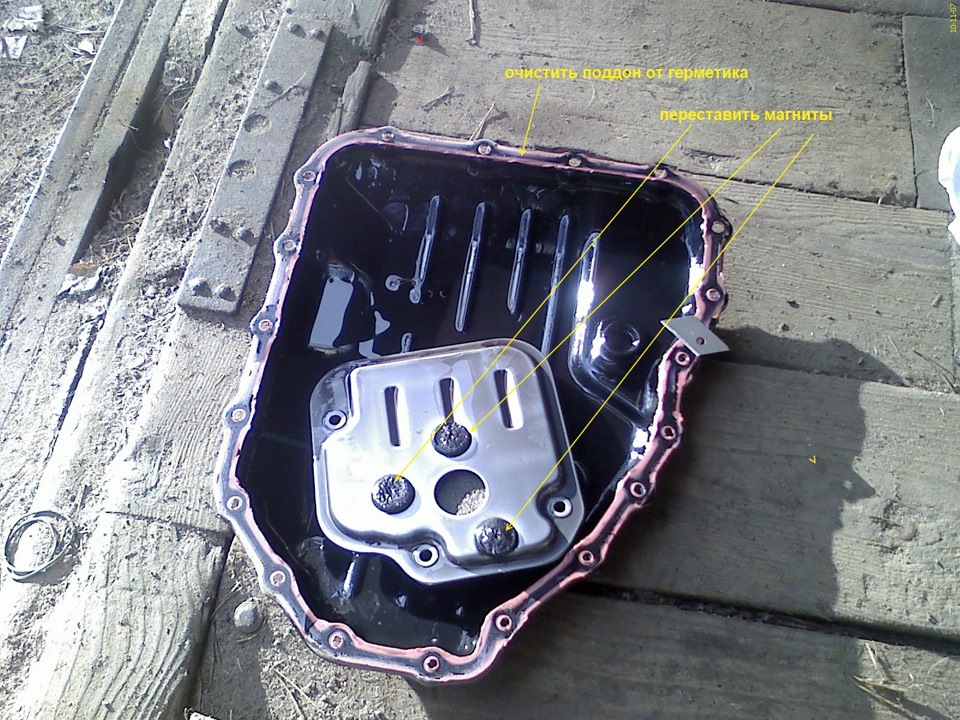
I didn't change the filter. That's why the photo is not mine. But you do not forget to rearrange the magnets on the new filter.

Here is the hydraulic unit. We discard these 2 loops, the one on the left is what we need.

Remove the switch and pull out the piston.

We unscrew the valve body itself. I marked it in red in the photo. But I could have missed a couple as it was a long time ago. I did this, unscrewed it around the perimeter, if it didn’t work. then he tore off all the stragglers and, without unscrewing them to the end, loosened them and watched when he went.
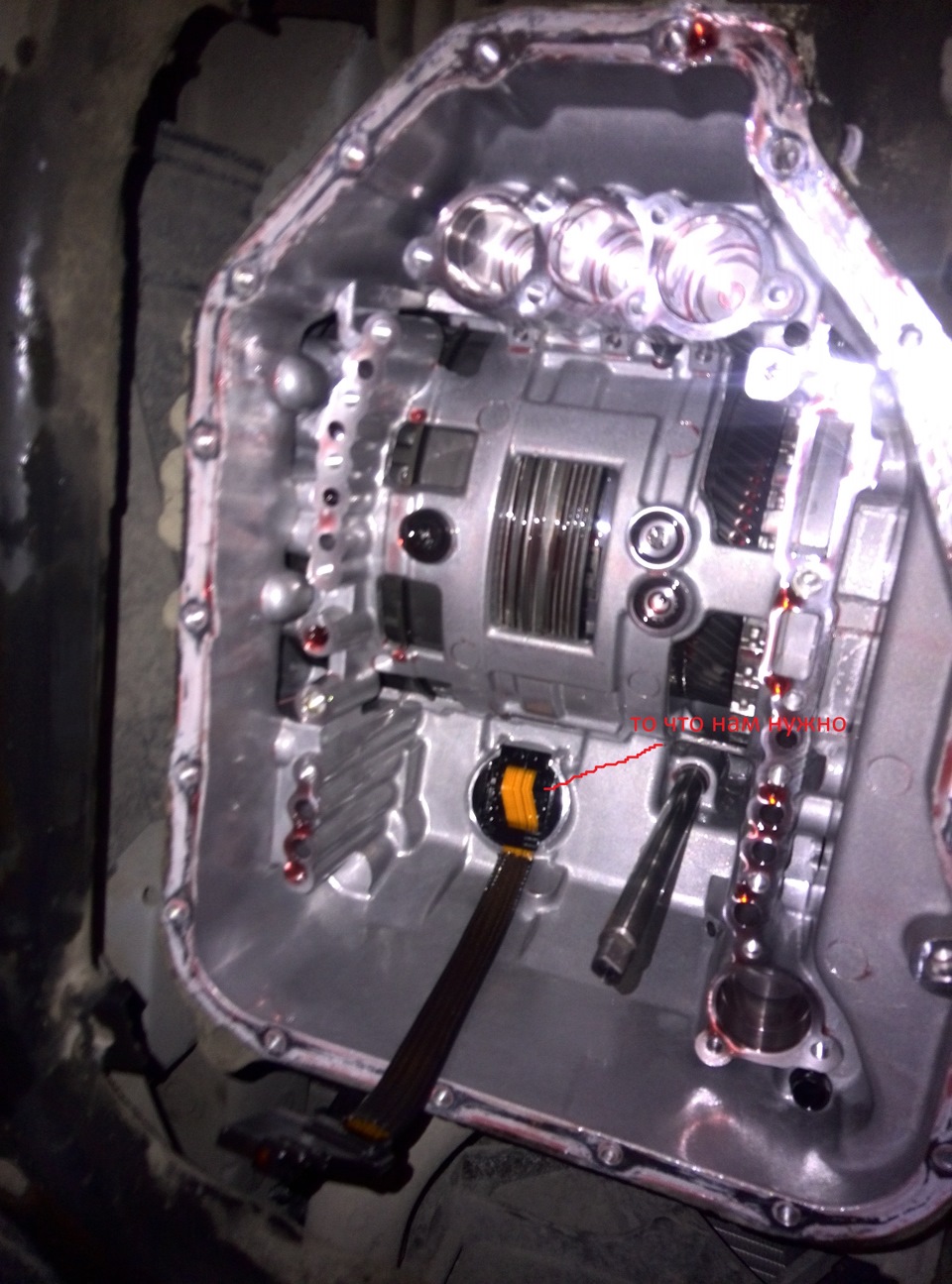
Here is our loop.
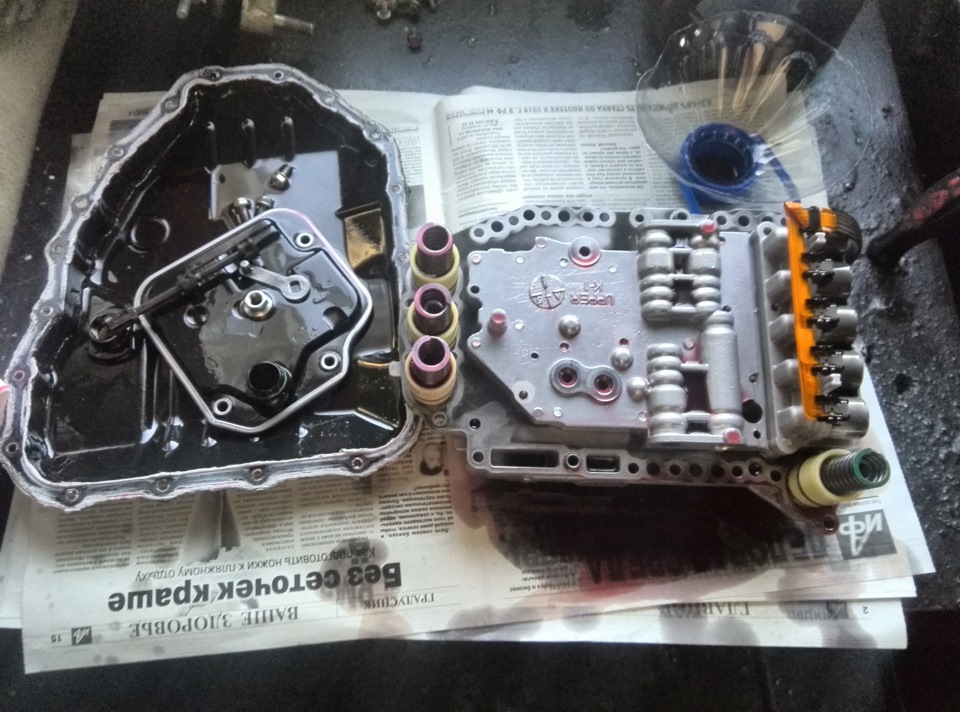
Here is the removed valve body and springs. How to unscrew it, remove it carefully so that everything does not scatter. They will not jump out, but all the same. On the left on the oil filter of the box, a piston and a foot are visible. We have already seen in 4 photos when everything is unscrewed.
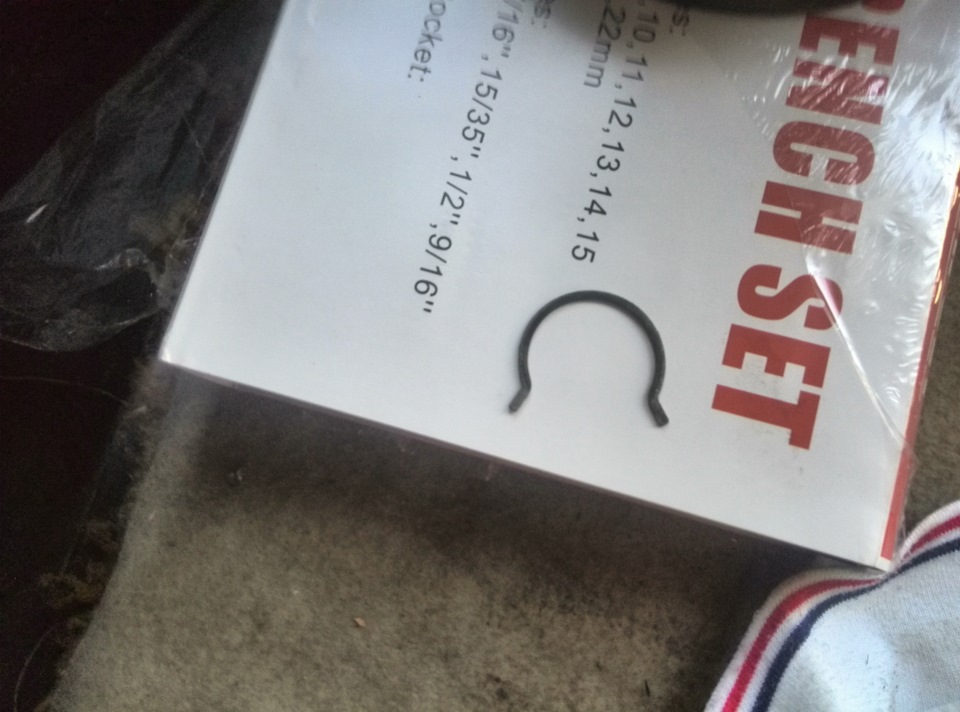
This latch is inconspicuous. Be outside the box where the connector connects to the box.
Old automatic transmissions were very reliable mechanisms. Initially, they did not have any complex electronics and control systems. The gears simply shifted alternately, depending on the readings of a pair of sensors, there was no control system, sports modes, and so on. But on current trends to improve fuel economy and efficiency of the car, more and more changes were made to them. From the late 80s, automatic transmissions were gradually transferred to electronic control, and in the mid-90s they began to install electronic control units (in fact, computers), an economy mode, a sport and a winter mode appeared, and more and more steps.
Complication and fine tuning systems have made modern automatic transmissions very reliable
In the 2000s, automatic transmissions came to modern look- began to work in tandem with the engine, controlled by one or two electronic control units, the control itself was transferred to the hydraulic block of the box. The complication and fine-tuning of systems have made modern automatic transmissions much less reliable.
Like any computer, an electronic control unit can make a mistake, “glitch”. In this case, the emergency mode will disappear after the engine is stopped and started. In some cases, it helps to reset the terminal from the battery. It is not always possible to remove the error in this way. If this does not happen, it's time to go for diagnostics.
In emergency mode, the car loses its dynamics, the gear does not turn on, it slowly picks up speed, the control lamps are on, indicating that something is wrong with the automatic transmission.
You can’t drive in emergency mode - it exists only to drive a few kilometers to the service. Usually, in an automatic transmission, in emergency mode, only the third speed is turned on, at which a start from a place and a ride take place. It is not recommended to accelerate in this gear over 60, the engine and gearbox will be very hot. Starting off in third gear is also not easy, especially in winter.

When the “HOLD” lamp blinks, the automatic transmission enters Emergency Mode
If the activation of the emergency mode is accompanied by the appearance of any extraneous noise that does not pass from the box, it is better to use a tow truck. Serious car services that repair automatic transmissions provide a tow truck for free.
If the breakdown occurred on the highway, where it is problematic to find a car service, then you can take a chance and try to drive in an emergency box. Only now the result of this can be different - from “it didn’t get worse” to buying a new automatic transmission. You should drive without accelerating more than 80 km / h, smoothly accelerating and braking, trying once again not to press the gas pedal to the floor.
Reasons for the box to go into emergency mode
Modern automatic boxes gears are complex mechanisms. Unlike their predecessors, modern examples are closely connected to the engine, controlled electronically and have a lot of sensors and protections.
The first and most common reason for the box to go into emergency automatic transmission mode is an abnormal oil level. It occurs due to a leak in the automatic transmission, oil overflow or abnormal operation of the valve body. If we are talking not about the valve body - easy to fix. Leaks in the automatic transmission can be both mild and serious - for example, damage to the automatic transmission housing or a gasket between the engine and the automatic transmission has failed.
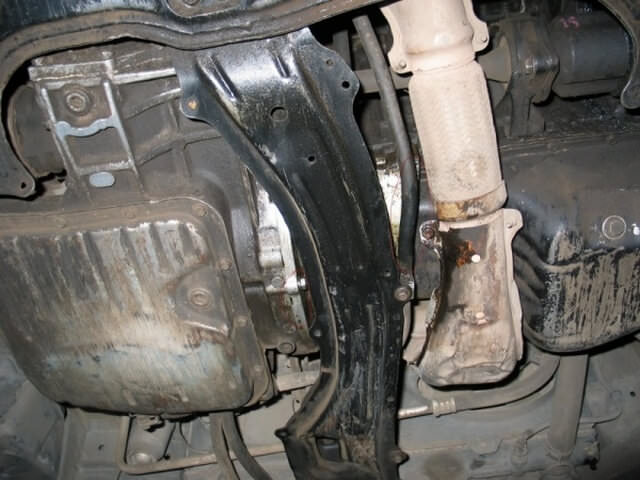
Emergency mode occurs due to a leak in the automatic transmission
Such repairs will be expensive. In mild cases, some kind of gasket or seal is usually responsible for an oil leak.
Low oil level in the box is very dangerous. Some units of the box cease to be lubricated normally and begin to wear out, contaminating the entire automatic transmission with their fragments. Other units start to overheat and this is also not the most in the best way affects them. As a result, a chain reaction occurs - the weakest and most distant parts break, then all the rest. High level oils are also dangerous. IN best case excess oil will be thrown out through the breather. At worst, it will foam and simply lose its properties, leading the automatic transmission to the same picture as during oil starvation.
This can also include the operation of the automatic transmission on "non-native" oil. Some automatic transmissions are so optimized and tuned that they simply cannot work on oil with slightly different characteristics.
The second reason is that the self-diagnosis system revealed problems with the hydraulic or mechanical part of the automatic transmission. Most often - this is the wear of the friction clutches. The electronic diagnostic system will be able to correctly indicate a breakdown only in some cases. In any case, you will need to remove the box and inspect its insides for wear and damage.

One of the reasons for automatic transmission emergency mode is problems with the hydraulic part.
Worn out clutches will quickly make the oil burnt, it will saturate the rest of the clutches and at one fine moment the automatic transmission will “stand up” completely until it is recapitalized. Broken gear teeth or worn metal parts will quickly disable neighboring ones, and where it was necessary to change one small part, it will be necessary to change the entire gear.
The third reason is a malfunction of the electronic control unit, wiring or sensors. And this is the real scourge of modern automatic transmissions. Most often - this is a bad contact of one of the loops. Most of the contacts in automatic transmissions are very small and thin wires, tracks less than a millimeter thick and loops thinner than a sheet paper. Damage to such wiring is easy. Such a small nuisance, in addition to emergency mode, can also give not frail symptoms in the form of kicks, jerks, slips and loss of gears. The transition to emergency mode in this case is chaotic. The automatic transmission can safely drive for a week, and on the weekend it goes into emergency mode on every bump.
A worse option is worn out valve body channels. Dirty oil will eventually contaminate the hydraulic plate passages, jamming the plungers. Or one of the seals is starting to leak.
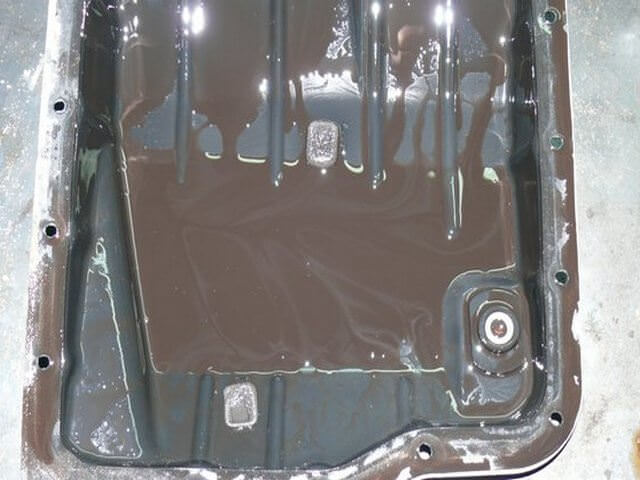
Dirty oil contaminates the channels of the hydraulic plate
There is only one result - the valve body goes crazy and opens the valves to the fullest, starting to drive a huge amount of oil through itself. Oil filled with metal fragments acquires properties close to sandpaper. The aluminum channels of the hydraulic plate wear out very quickly, and very soon the hydraulic unit receives damage incompatible with later life. The abnormal pressure that he begins to apply to the box also does not benefit her. A chain reaction begins, which eventually leads to expensive repairs.
If the transition to automatic transmission emergency mode is carried out only on a cold or hot one, the problem may be in the temperature sensor.
When you turn on the forward gear, the box goes into an accident due to the failure of the input or output shaft rotation sensors.
If the box does not leave the emergency mode at all, the electronic control unit is most likely covered.
The most vile thing about such breakdowns is the huge difficulty in diagnosing. The car's self-diagnosis system may not show the cause at all. And local experts will shrug their shoulders, offering to change one thing or another. And the reason for everything will be a small torn wire in the very depths of the valve body.
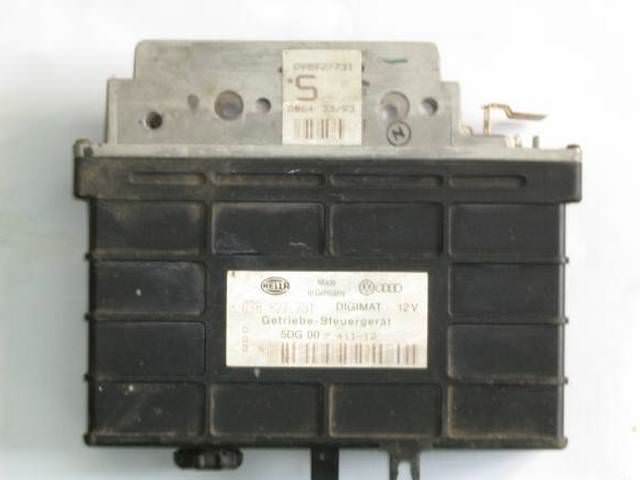
If the box does not exit the emergency mode, then the electronic control unit is covered
What to do if the box went into emergency mode?
The first thing to do is to "reset" the error. To do this, you need to stop the car, turn it off, wait a few seconds and start it again. Next, you need to drive a few kilometers in a calm mode and see if the error repeats.
The second thing to do is to look at the level and condition of the oil. The level measurement procedure may differ depending on the vehicle model.
And finally, the third - if the emergency mode of the automatic transmission has not stopped - you must immediately go for diagnostics to a normal service.
Audi A6 and C7
On Audi A6 and C7 cars, the most common reason for the automatic transmission to go into emergency mode is the failure of the solenoids and poor contacts. This is due to the new design of the Audi A6 and C7 automatic transmission, in which the electronic control unit is combined with a hydraulic plate. The electronic control unit of the Audi A6 and C7 is constantly overheating, which does not have a particularly good effect on its operation and resource. The solenoids in the automatic transmission of the Audi A6 and C7 last about 6-8 years and then they must be changed.
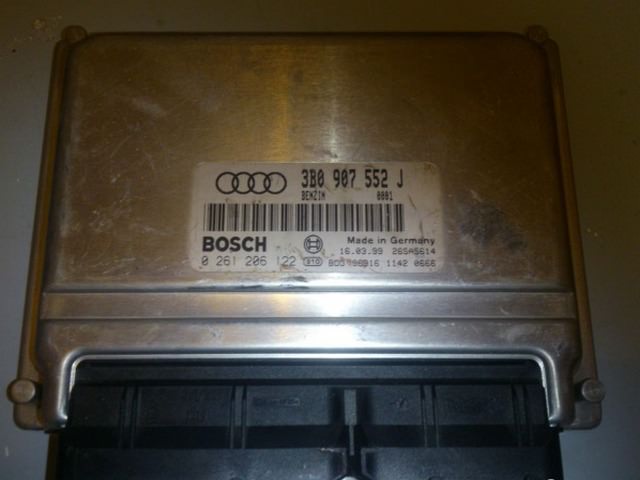
Audi A6 electronic control unit constantly overheats
But if the automatic transmission of the Audi A6 and C7 has not skated so much yet, the reason is in the sensor or contacts. You can’t do without the diagnostics of the Audi A6 and C7. ride with emergency automatic transmission on the Audi A6 and C7 - the idea is not very good, the boxes are not cheap.
BMW E90
The "wrong" oil can "do things" in the BMW E90. Among the symptoms may be the transition of the BMW E90 automatic transmission into emergency mode, the operation of the engine cooling fan, jerks when driving, the selector lock after switching to position P, clicks when switching to N or P.
Surprisingly, fake or deliberately filled with the wrong oil is to blame for everything. After flushing the BMW E90 automatic transmission and changing the oil to the original, the car will work as it should.
Volkswagen Vento
The Vento car can behave very strangely due to poor contact. The Vento automatic transmission will shift gears at 4000 rpm (in sport or economy mode, no difference). Vento quarter speed will turn on at speeds over 100 km / h, when braking it will immediately be reset to the lower one. The temperature sensor can also cause the emergency mode of the Vento automatic transmission.

It is known that all modern automatic transmissions (automatic transmissions) are quite complex mechanisms that consist of multiple parts and assemblies, and they are also provided with "smart" electronic control and a self-protection system. It is these electronic protection systems that help enter the emergency mode of the automatic transmission, the reasons may be different.
Therefore, only with proper and gentle operation, the gearbox will be able to give its owner real driving comfort, as well as please the car with its long and flawless service.
Automatic transmission breakdowns
But, nevertheless, after all, no one is insured against breakdowns, and therefore, in the event of failures in its operation, the automatic transmission can make its owner pretty nervous, and also oblige him to invest considerable financial resources for repairs.
But modern boxes are equipped with systems for self-control of self-diagnosis, which gives them the opportunity, even without outside interference, to independently identify a violation in their work, as well as take urgent measures for further protection. In addition, in case of serious malfunctions, the box automatically switches to emergency operation.
When switching to this mode, the car's computer will notify the driver about this with the corresponding indicator on the dashboard. And everything will depend directly on the car model and its modification, and therefore various inscriptions may appear: "OD OFF", "Hold", "S", "Check AT", "Check Engine" and others. As automotive experts assure that even without these signals, it will still be noticeable strange behavior car.
Causes of breakdowns and consequences
 And the symptoms of a malfunction of the box can be different. Sometimes immediately after starting the box behaves as usual and works in normal mode, but after a while some problems begin. Moreover, troubles from the box can appear literally after a hundred meters of the trip.
And the symptoms of a malfunction of the box can be different. Sometimes immediately after starting the box behaves as usual and works in normal mode, but after a while some problems begin. Moreover, troubles from the box can appear literally after a hundred meters of the trip.
One of the problems is when the box only works on one gear ratio, and this can be like a second or third gear. In addition, the box also allows you to switch to reverse, as well as parking and neutral speed, and it also happens that the automatic transmission does not go to the cold. Therefore, driving such a vehicle and with such a faulty gearbox becomes simply not comfortable and inconvenient, and even unsafe.
Emergency mode and consequences
If we take a closer look at what does this automatic transmission emergency mode mean, the causes and consequences? After all, the electronics with their signals tells the driver that there are serious malfunctions in the box, and therefore it is necessary to contact the car service. All this once again suggests that the automatic transmission is a very complex mechanism and therefore there can be quite a lot of possible reasons for the occurrence of malfunctions in it.
But among the possible breakdowns, there are several, as the most basic.
- First, this is a violation in the operation of electronics, and this can be caused by a burned-out microcircuit or a swollen low-quality capacitor. In addition, the oxidized contact, which shorted the wire, also disrupts the operation of the control system, which causes it to switch to emergency operation. And the repair will be concluded in the mandatory and speedy replacement of the identified damaged electronic equipment, and, as a rule, this procedure will not be expensive.
- The second reason may be the discrepancy between the required oil level in the automatic transmission, which is required by the technical documentation. But it is worth remembering that also an excess of oil is very harmful to the operation of the box. Therefore, overfilling or underfilling of oil causes the control unit to go into emergency mode. Therefore, the oil level must be strictly in the required amount.
- The third probable cause may be a lack of lubricating fluid, as well as possible reason leakage of this fluid.
- The fourth and, perhaps, the most expensive reason that can become a breakdown is a mechanical problem. Most car masters say that this is the most expensive and also the longest repair, because it requires a complete and complex disassembly of the entire automatic transmission.
Naturally, modern diagnostics tries to simplify possible problems, and sometimes it itself detects malfunctions, but, nevertheless, it is best to pay attention to the automatic transmission more often, and only true professionals should trust periodic diagnostics.
Video: Automatic transmission emergency mode




